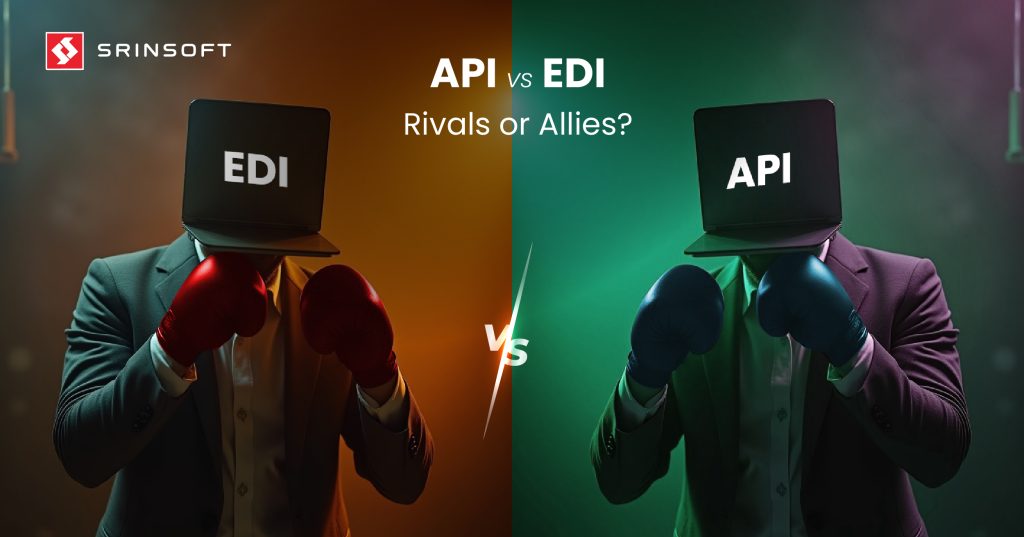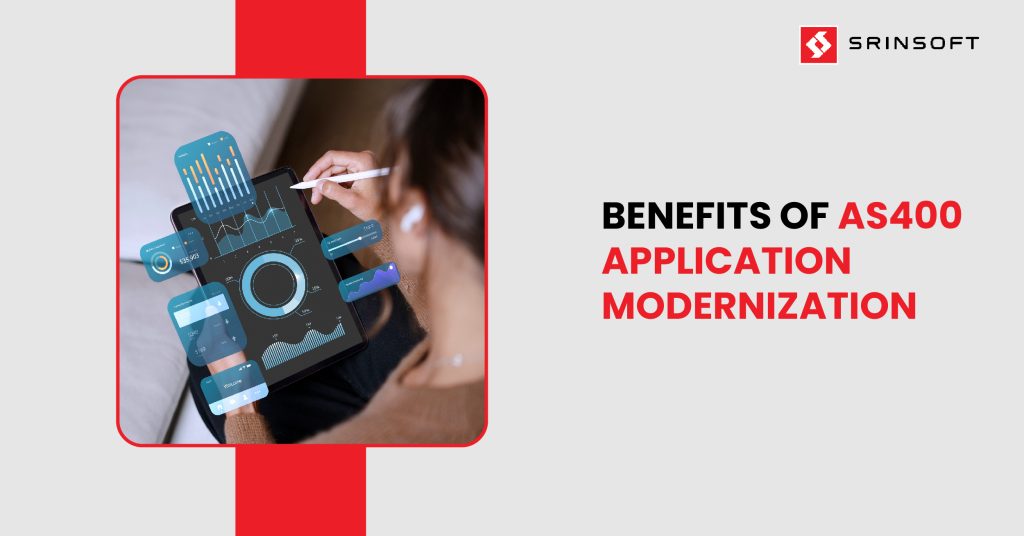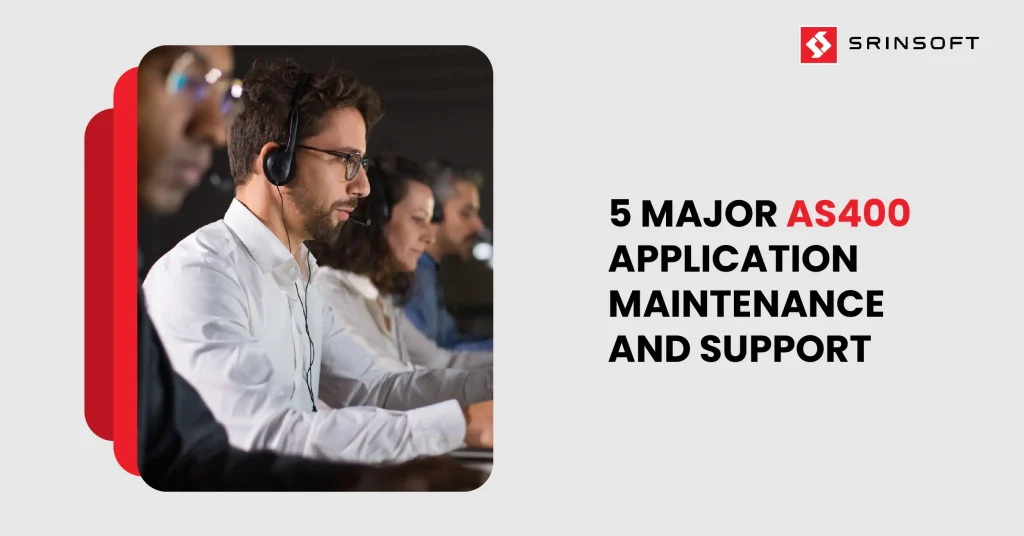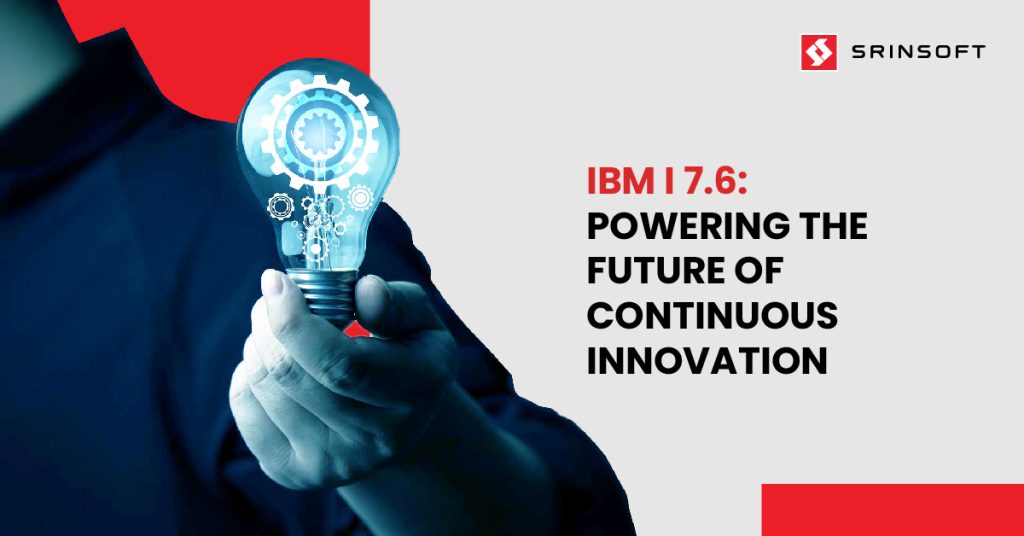
Introduction
IBM I, formerly known as AS/400, is like a well-engineered locomotive that has pulled the weight of mission-critical enterprise workloads for more than three decades, steadily, securely, and without fail (with barely any unplanned downtime for decades). But as a part of today’s enterprise, you demand more, unyielding uptime, airtight security, and adaptability to relentless technological shifts. Exactly for these reasons, the locomotive, the workhorse that is – has been fitted with next-gen tech and smart controls, ready to speed down new tracks of innovation without losing its legendary dependability.
If you’re exploring next steps, our IBM i (AS400) modernization services can help you accelerate outcomes without disrupting current operations.
But what if that same locomotive could fly, without ever losing traction?
Welcome IBM i 7.6!
For enterprise organizations like yours, the most recent IBM i 7.6 milestone release has come up with significant updates across the portfolio, including advancements in security, application development, and system administration, wherever you fit in. These contain the tools and capabilities you need to balance your legacy strengths with continuous modern innovation, capitalizing on future opportunities that seem to emerge at the speed of light.
Evolution of IBM i: From IBMi AS400 to IBMi 7.6
Way back in 1988, paperless offices and networked computers were mostly limited to stockbrokers and science fiction. That changed with IBM’s introduction of the Application System/400 (as400 system) family of servers and network adapters. It combined hardware, OS, database and middleware into a single turnkey solution, setting it apart from UNIX and Windows.
The modern digital workplace has its roots in the AS/400, that’s where it all began.
Throughout its evolution, key milestones include:
- The transition from fixedformat RPG/COBOL to freeformat RPGLE, along with Clbased integration.
- The introduction of Db2 for i, an SQL relational database deeply embedded in the OS.
- IBM Navigator for i and ACS , modern web based administration tools. You can copy user profiles between nodes and delete user profiles from more than one “node” at a time.
- Support for opensource languages via PASE (Python, Node.js, PHP, etc.).
Can a platform built in the ’80s really keep pace with the needs of modern cloud-native enterprises?
With IBMi 7.6, the answer is a surprising yes!
Now, with IBM i 7.6, the platform fully embraces modernization without leaving its heritage behind. 7.6 builds on decades of AS/400 software and architecture. Melding rock-solid resilience with cloud readiness, modern development, and AI-integrated security
What’s New in IBM i 7.6
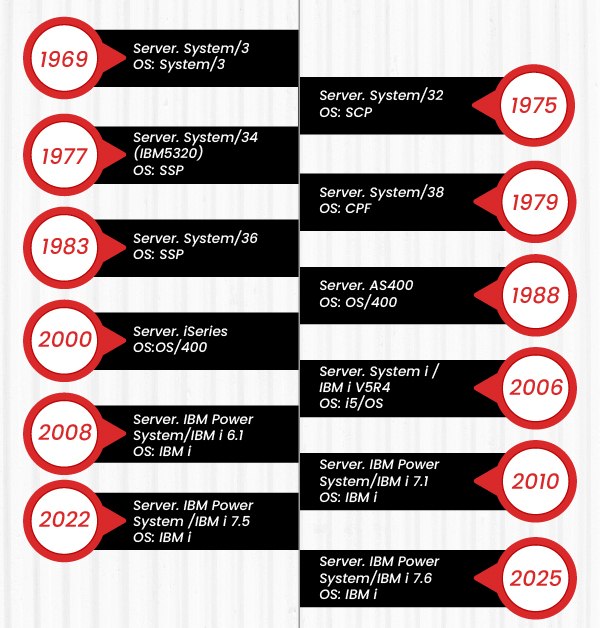
The theme of 7.6 is security, with enhanced security features.
- Integrated Multi-Factor Authentication (MFA): Integrated MFA (running within the IBM i OS so that you can configure it on a user profile level) strengthens your security posture, providing robust protection against ransomware and unauthorized access with time-based one-time password (TOTP).
- Streamlined Regulatory Compliance: Advanced authentication prevents a user profile from being used without supplying the user profile’s credentials. IBM-supplied user profiles with names that end in _NC, for “not changeable” are used by the operating system and applications for added safety.
- Reduced Total Cost of Ownership (TCO): Built-in MFA and other security features help lower costs by removing third-party dependencies, save time, and simplify management.
Improved performance and scalability:
It does look more and more like RDi’s time has passed and code for i is the future, and it keeps getting better, helping developers use modern tools and methods to meet today’s IBM i development needs:
- For example, a financial services firm handling online payments can now use IBM i 7.6’s new Cryptographic Services APIs to encrypt customer data using stronger algorithms like AES-256.
- Db2 for i: Features such as the data change table support for DELETE and UPDATE (SQL) statements open the door to parallel execution.
Under the hood, the platform is smarter about job scheduling, memory use, and database throughout helping high volume apps run more efficiently.
Integration with modern DevOps tools:
Why should modern developers settle for outdated workflows just because the backend is legacy?
Imagine an AS400 RPG developer working on a legacy payroll system. Previously, they had to manually transfer code, compile it on the server, and debug line by line using green screens. Now, using the Code for IBM i extension in Visual Studio Code, they can pull RPG and DDS code from Git, compile it directly, see instant syntax hints, and debug in batches with hover help, just like modern developers working on cloud apps. With enhanced Db2 for i plug-in, they can also run complex SQL queries, edit results on the fly, and view detailed error logs, all within the same environment.
- Complete DDS files from a local git repository.
- Support for batch debugging
- Peek definition enabled for both fixed and free format RPGLE
- Source orbit integration
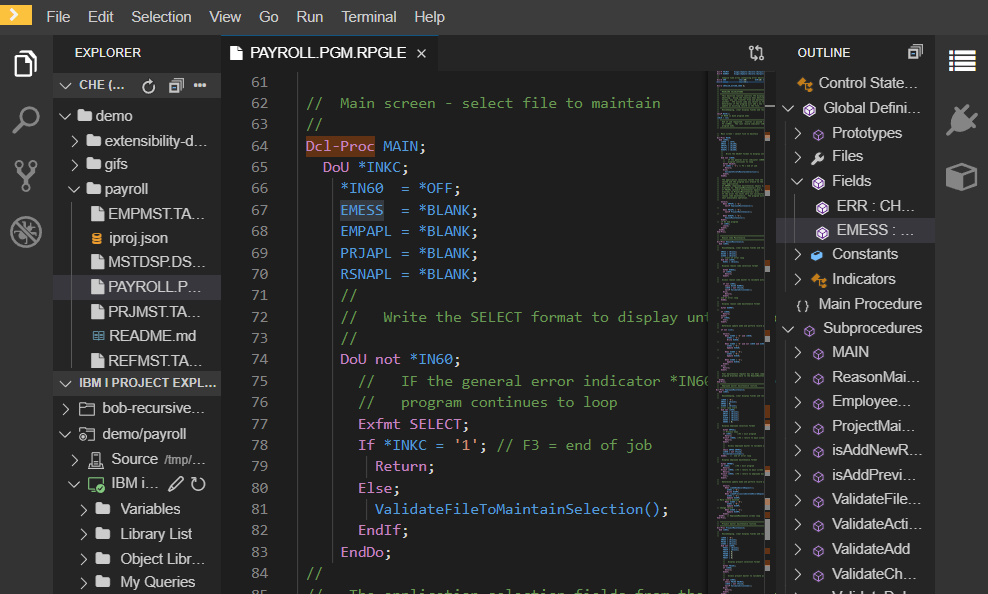
Support for open-source technologies:
Full support for Node.js, Python, PHP, and other PASE languages. Picture this:
- A retailer enterprise can use Node.js to build a modern web dashboard that pulls live inventory data from their existing RPG-based IBM i backend.
- A high-end bank can integrate Python scripts to run data analytics on customer transactions stored in its IBM i system, alongside legacy COBOL processes.
Cloud-readiness and hybrid cloud capabilities:
- With Migrate While Active, companies can move IBM i workloads with minimal downtime to new Power servers or into the IBM Power Virtual Server (PowerVS) cloud. For example, a retail chain can upgrade to a new Power server without halting its POS and inventory systems.
- Db2 Mirror GUI has also been modernized for easier cloud synchronization and highavailability management
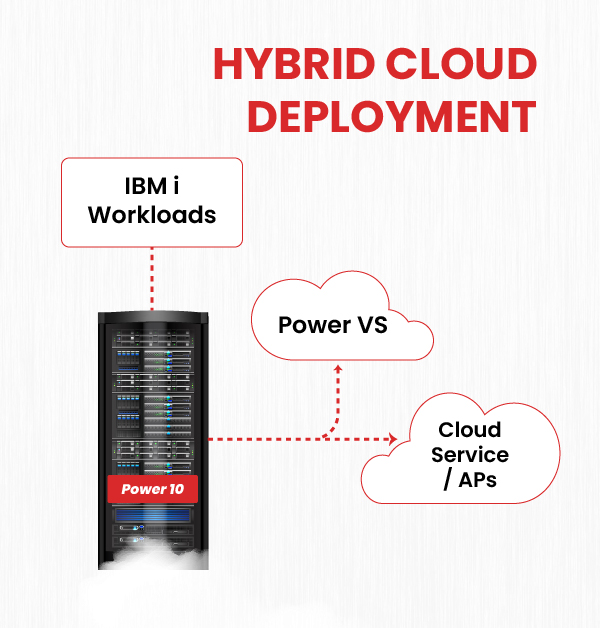
Why IBM i 7.6 Matters for Businesses
Business Continuity and Reliability: IBM i 7.6 carries forward the platform’s unmatched reputation for uptime and reliability. With builtin backup/DR tools, encryption, and HA support, businesses can operate securely and continuously. For example, a hospital can run its patient records and billing even during maintenance or power outages.
Cost Efficiency and ROI: For example, a large hospital chain can switch to IBM i’s native MFA, cutting out third-party tools, reducing licensing costs, and simplifying upgrades, leading to lower IT expenses and higher long-term ROI.
The Role of AS/400 RPG
If you’re an as400 RPG developer or as400 RPG programmer, IBM i 7.6 brings both opportunities and evolving expectations.
- Evolving Skillsets: Learn freeformat RPGLE, Git based workflows, and integration with tools like VS Code. Understand working with SQL Services, RESTful APIs, encryption, and MFA systems.
- Opportunities in Modernization Projects: Modernization projects centered on IBM i 7.6 need developers who can blend RPG logic with modern interfaces bridging monolithic applications to microservices, APIs, or web gateways.
- AI tools like IBM Watsonx Code Assistant for i (in preview) help RPG developers refactor and document legacy code faster, making it easier to understand and update, saving developers weeks of manual effort. For example, a top bank can use IBM Watsonx Code Assistant for i to quickly refactor decades-old RPG code in its core banking system.
- Training and Certification Paths: IBM offers resources, tutorials, and certification tracks for moving from classic AS/400 software to modern IBM i development. Communities like COMMON and IBM’s own forums provide learning pathways to enhance RPG, SQL, automation, and security skills.
IBM i 7.6 and the Future of Enterprise IT
IBM i 7.6 sets the platform up for long-term relevance.
AI and Machine Learning Integration: For example, an enterprise financial services firm can use Watsonx Code Assistant for i to automatically analyze and refactor complex RPG code, making it easier for new developers to understand and update legacy applications.
API Economy and Microservices: For example, an insurance network can use IBM i 7.6 to expose policy data as a REST service using SQL, allowing their web portal to fetch and update customer records directly. With SQLSTATE_INFO, developers can now debug complex queries faster when errors occur during data updates.
These features support incremental migration to microservice and event-driven architectures.
Sustainability and Green IT: A large hospital can move its workloads to Power10 servers, consolidating multiple older systems. This cuts down energy use by nearly 40%, lowering both costs and their data center’s carbon footprint.
LongTerm Roadmap: IBM continues to deliver new functionality via Technology Refresh (TR) and PTFs. From 2025 onward, these are decoupled into hardware and software updates, allowing faster delivery of enhancements and hardware support
Getting Started with IBM i 7.6
Upgrade Paths and Prerequisites
- IBM supports IBM i 7.6 only on Power10 or newer hardware.
- To enable native MFA features, you must set the system security level to at least Level 40 and the password policy to Level 4.
Tools and Resources for Migration: Use IBM i Migrate While Active to minimize downtime during upgrade or cloud migration
- Opensource tools like Code for IBM i (VS Code), Db2 extensions, and SQL Services help modernize development practices.
- IBM’s documentation such as the Redbooks overview of IBM i 7.6 functions provides in-depth guidance
Community and Support Networks
- IBM’s Community forum hosts discussion and guides: e.g. “IBM i 7.6 – Stay Secure and Stay Innovative” announcement and Q&A
- Technical communities like COMMON host sessions, webinars, and hands-on labs around 7.6 topics like security, DevOps, AI, and migration strategies
Conclusion
IBM i 7.6 isn’t just another version, it’s a bridge between legacy and the future.
Like a trusted railway upgraded with high-speed tracks, IBM i 7.6 builds on the AS/400’s rock-solid foundation while adding modern capabilities like MFA, encryption, open source support, cloud tools, and AI-readiness. It lets enterprises move faster without derailing reliability.
For businesses running as400 software systems, developers working in RPG and SQL, and organizations committed to reliability, IBM i 7.6 offers a pathway: preserve the strengths of the past and confidently build toward the future. It is the gateway to a future of possibilities and innovation.
Looking for a way to bring your AS/400 systems into the cloud era without losing what makes them unique?
Partner with SrinSoft’s IBMi experts to future-proof your infrastructure and accelerate digital innovation securely and seamlessly.
The future of continuous innovation with IBM i 7.6 starts with SrinSoft.
The SrinSoft Edge
- Trusted by A-list clients across industries
- End-to-end IBM i modernization from legacy AS/400 to modern cloud-native platforms
- Expertise in RPG, COBOL, and open-source integrations
- Product customization and enhancement services tailored to your business
- Accelerated project delivery with agile development and DevOps practices
- Cost-effective solutions without compromising on quality
- Seamless integration with APIs, microservices, and cloud infrastructure
- 24/7 support and accountability you can rely on
- Future-ready solutions: AI enablement, mobile access, and secure cloud migration
If your core systems have been rock-solid for decades, why not give them the tools to thrive in the next decade too?
Call our team now to discuss your project!
Just drop your details in the form right here and our team will get back to you ASAP for a quick walkthrough
Frequently Asked Questions (FAQ)
1. What is IBM i 7.6 and how is it different from older AS/400 systems?
IBM i 7.6 is the latest evolution of the AS/400 platform, designed for modern enterprise needs. The theme is security, and it supports open-source tools, and enables cloud and DevOps integration while maintaining a friendly relationship with legacy applications.
2. How does IBM i 7.6 improve security for businesses?
IBM i 7.6 introduces built-in Multi-Factor Authentication (MFA), advanced user profile protections, and stricter compliance controls, helping businesses defend against ransomware and unauthorized access without relying on third-party tools. Bonus? It saves you a headache or two (and costs) along the way.
3. Can legacy RPG developers benefit from IBM i 7.6?
Yes. Developers familiar with traditional RPG can now use modern tools like Visual Studio Code, Git, and Watsonx Code Assistant to refactor, debug, and extend their applications faster and more efficiently just like talking to a mentor, NLP style.
4. How does IBM i 7.6 support modernization and cloud migration?
With features like “Migrate While Active” and support for PowerVS cloud, IBM i 7.6 allows businesses to move workloads with no downtime whatsoever. It also supports integration with APIs, microservices, and open-source technologies.
5. Why choose SrinSoft for IBM i modernization?
SrinSoft offers end-to-end IBM i modernization services—from legacy AS/400 upgrades to cloud-native transformation—with proven expertise in RPG, COBOL, and open-source. Their agile approach ensures fast delivery, cost savings, and future-ready solutions.



